Looking for a fun new flavor for your homemade kombucha? This Pineapple Basil Kombucha is delightfully tropical with an herby twist!
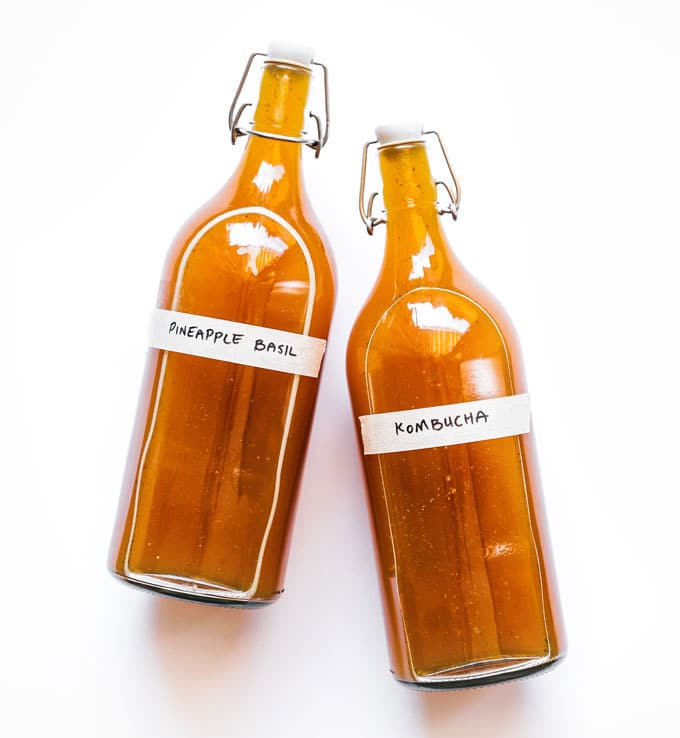
In my book, For the Love of Popsicles, I have a recipe for Pineapple Basil Popsicles that I adore. But I think people have been pretty scared to test it out, because basil is only for savory things, right? …. Wrong!
Pineapple brings that intense tropical sweetness while the basil brings an anise-y, peppery punch. And I just can’t get enough of it.
So obviously I had to try the dynamic duo out on my latest batch of kombucha, and it did not disappoint! A bit like the tulip-man’s Ginger Pepper Kombucha, which initially tastes like ginger until you get that inkling of pepper, this Pineapple Basil Kombucha has layers of flavors and is great served in place (or in) cocktails!
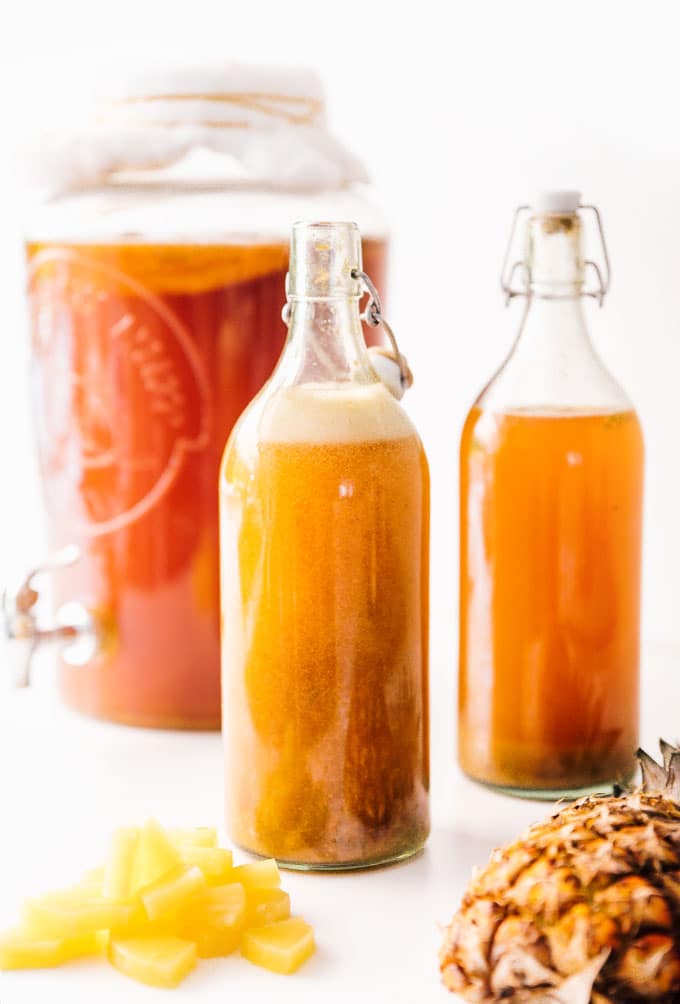
There are two main fermentation phases when making kombucha:
- First Fermentation: This is when you transform sweet tea into tart and delicious kombucha (see our step-by-step guide to homemade kombucha)
- Second Fermentation: This is when you carbonate the kombucha by adding sugars (like pineapple!) and bottling it.
In order to make this Pineapple Basil Kombucha, you will need to have completed the first fermentation already and have some kombucha that’s ready to be carbonated!
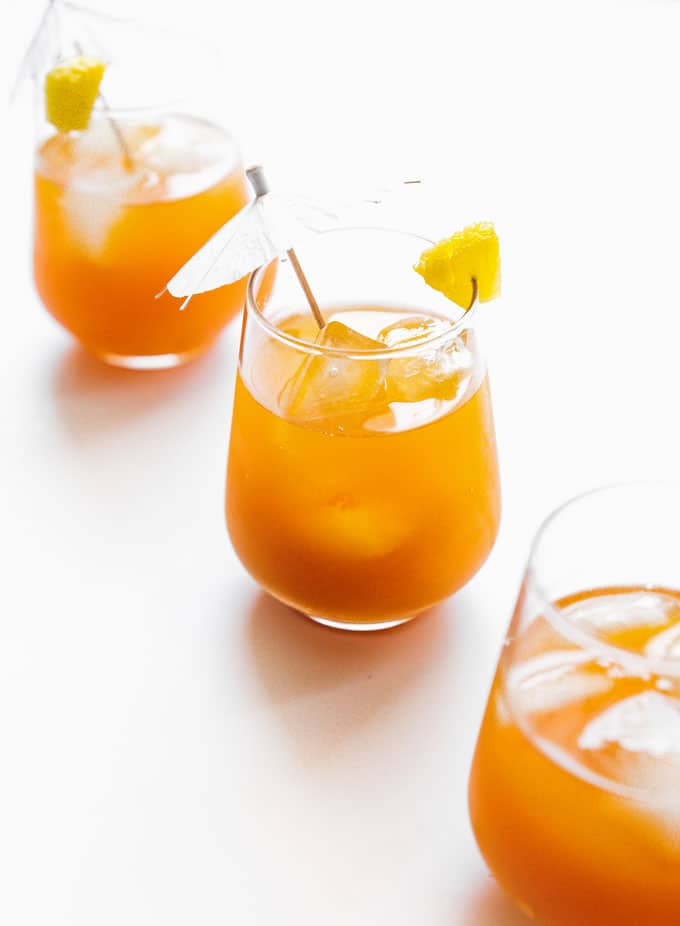
Ingredients to make Pineapple Basil Kombucha
- Kombucha from a first fermentation: You’ve brewed your kombucha and it’s the perfect balance of sweet and tart (step-by-step first fermentation instructions here).
- Pineapple: You can use fresh, frozen, or canned pineapple to make kombucha! If using frozen pineapple, just be sure to thaw it first. Not a fan of pineapple? Blackberries and strawberries also work well with basil!
- Basil: We’ll use fresh basil here, blending it up with the pineapple to get an even distribution of flavor.
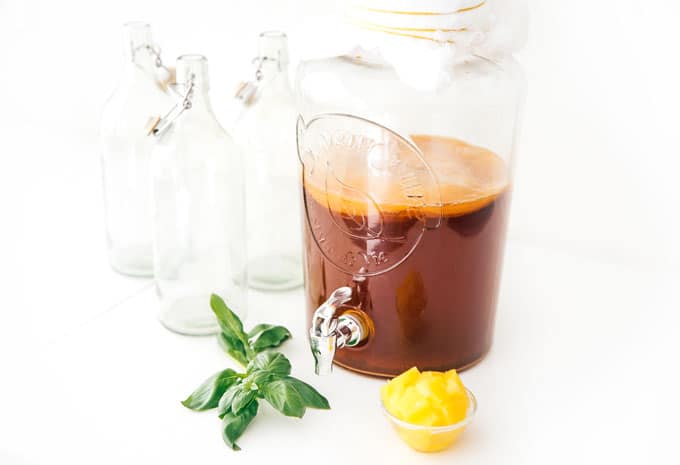
How to make Pineapple Basil Kombucha
Making your own flavored kombucha with pineapple is super easy. The process goes something like this:
- Puree the pineapple and basil: The more surface area of the fruit that is exposed to the kombucha, the more flavor and fizz you’ll have in the end! This also helps to infuse the basil flavor more evenly across your bottles.
- Bottle: Transfer kombucha into fermentation bottles, then evenly pour pineapple mixture into each.
- Ferment: For 3 to 10 days, until it reaches the carbonation level you like.
- Enjoy: Strain out pineapple basil debris (optional), then chill in the fridge before serving.
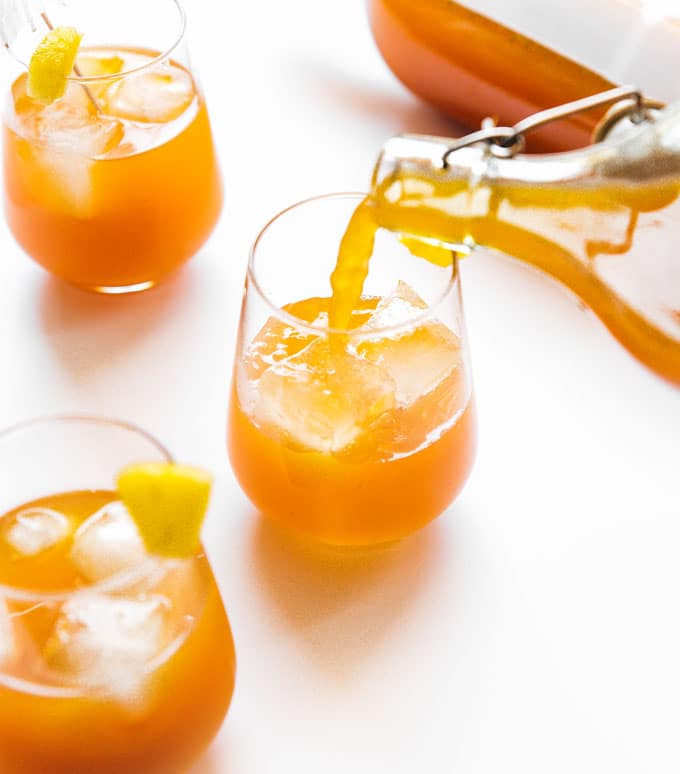
How to Make Pineapple Kombucha
Looking for something a bit more simple? Plain pineapple kombucha is one of my favorites! Just add 1/4 cup of pineapple chunks to 4 cups of kombucha and let it ferment until carbonated. Boom, teleportation drink to Hawaii.
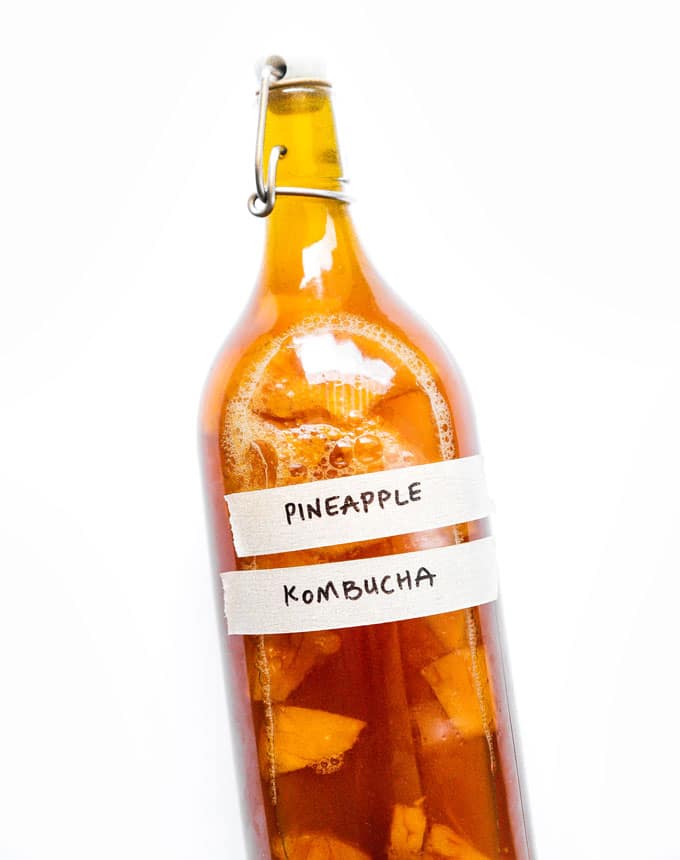
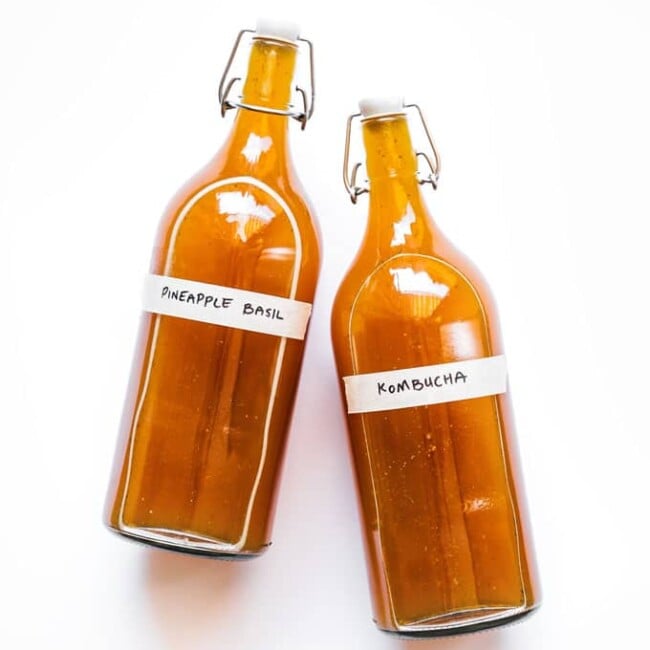
Ingredients
- ½ gallon kombucha from a first fermentation this is not storebought kombucha, 1.9 L
- ½ cup chopped pineapple* 100 g
- ¼ cup loosely packed fresh basil leaves 20 g
Instructions
- Puree: Use a handheld immersion blender or countertop blender to puree pineapple and basil until smooth (if needed, add a splash of kombucha to get things moving).
- Bottle: Transfer kombucha into fermentation bottles**, leaving about 3 inches empty at the top. Evenly distribute pineapple mixture into each bottle. Seal tightly.
- Ferment: Place in a dark, room temperature area for 3 to 10 days, until it reaches the carbonation level you like. This process will go faster in warmer climates, and slower in cooler climates.
- Enjoy: Strain the kombucha to remove debris (optional), then chill in the fridge before serving. Can be stored in the fridge, tightly sealed, for several weeks.
Tips & Tricks
Nutrition Information
More Kombucha Flavors To Try
Here are a few more of our favorite kombucha flavors (or check out our all-time favorite flavors here)
Zingy Raspberry Kombucha
A copycat inspired by the zingy Trilogy kombucha! (Recipe on our sister site, BrewBuch.com).
Chia Seed Kombucha
My favorite addition to kombucha...chia seeds! (Recipe on our sister site, BrewBuch.com).
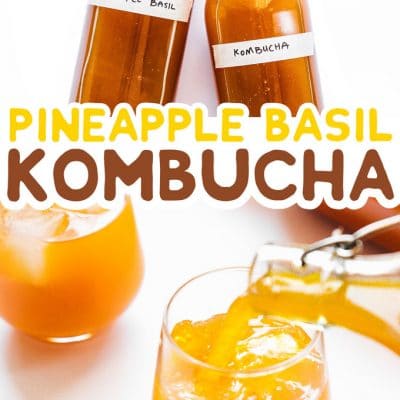
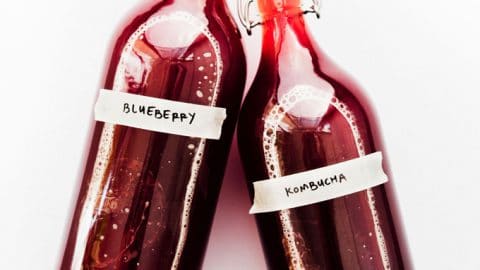
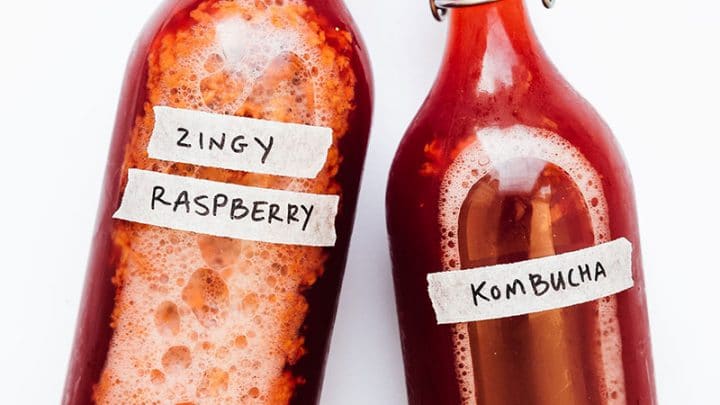
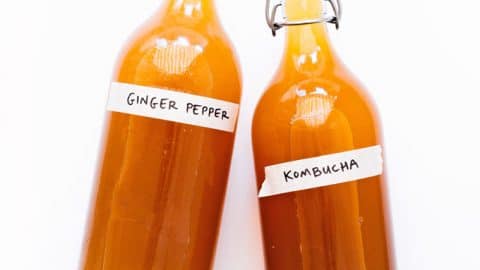
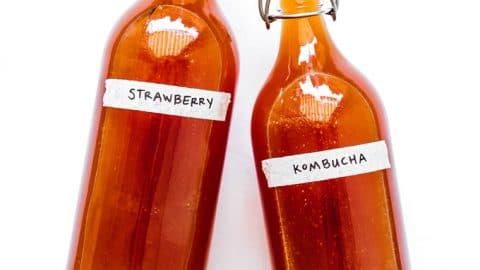
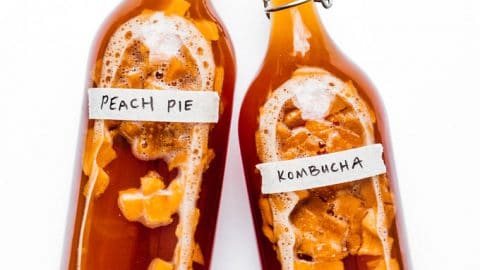
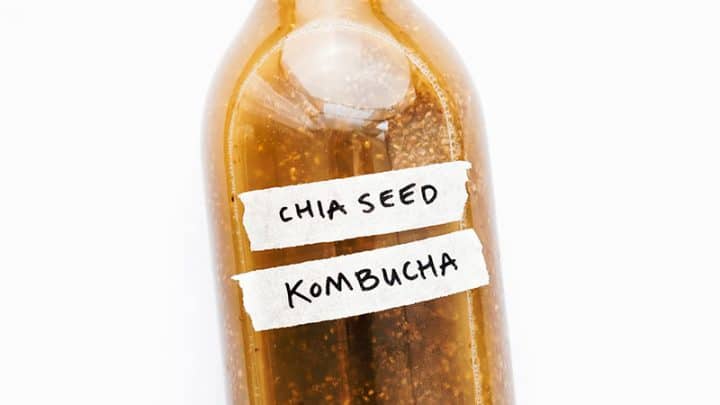
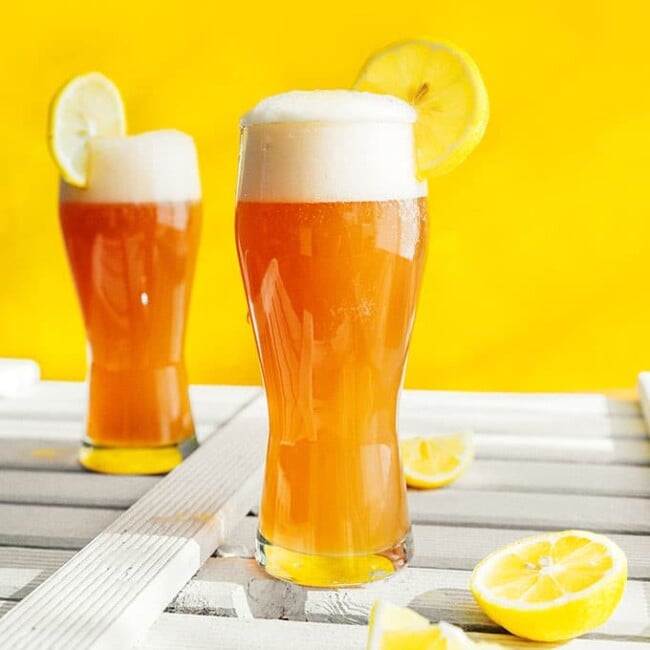
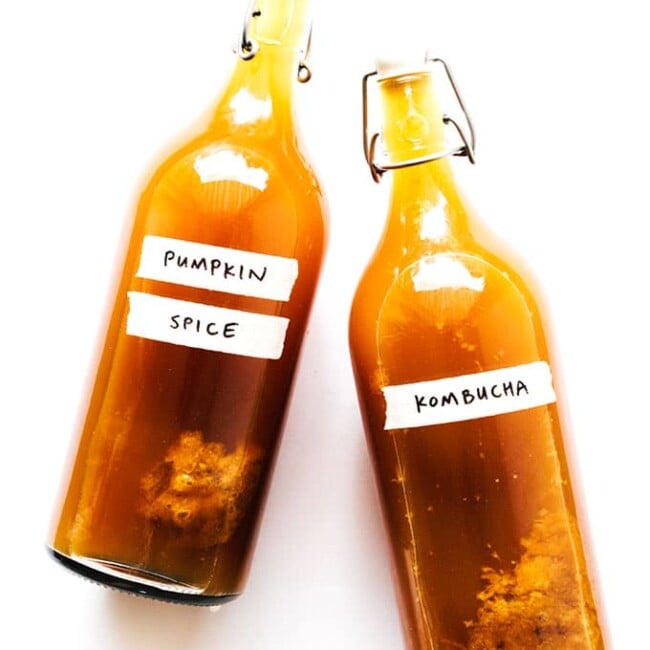
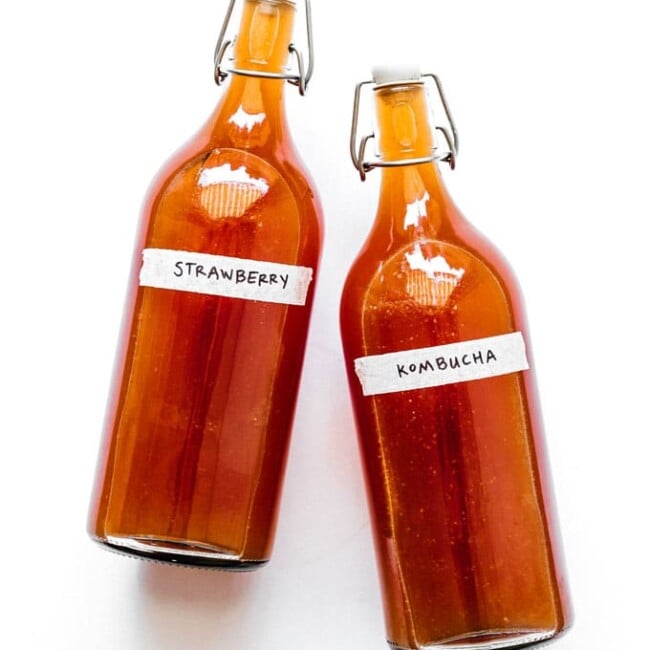
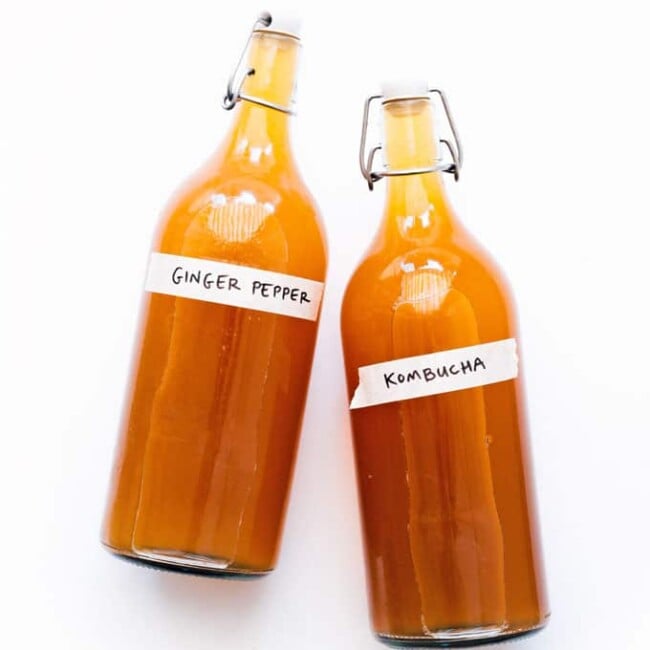
Yuliya says
Hi Sarah, have you ever tried adding 1-2 drops of essential oils (peppermint or basil or ginger) to the final product? I wonder if it would be ok and my kombucha won’t go bad.
Sarah says
Hi Yuliya! I actually haven’t tried this yet! I think it could be okay, as long as 1) the essential oil isn’t poisonous to ingest (I think some might be), and 2) the essential oil doesn’t have antifungal / bacterial / viral properties, which could hurt the kombucha. I would love to here how it goes if you try it out! 😀
Lau Mei lin says
Hi Sarah,thank you very much for the kombucha recipe.can I have the Butterfly Pea Flower Kombucha recipe.
thank you
Yvonne says
Can I put a cinnamon stick in the initial brew?
Sarah says
Wait until the second fermentation to add any extra ingredients, like cinnamon 😀
Kat v says
Hi there! Newbie kombucha maker here with a final fermentation question. You say to use fermentation bottles and then strain out the fruit bits when it’s done fermenting. So you put the kombucha back into the fermentation bottles after straining? If so, I wonder if fermenting in mason jars and then transferring to fermentation bottles after straining would work? What do you think?
Sarah Bond says
That would work I think!